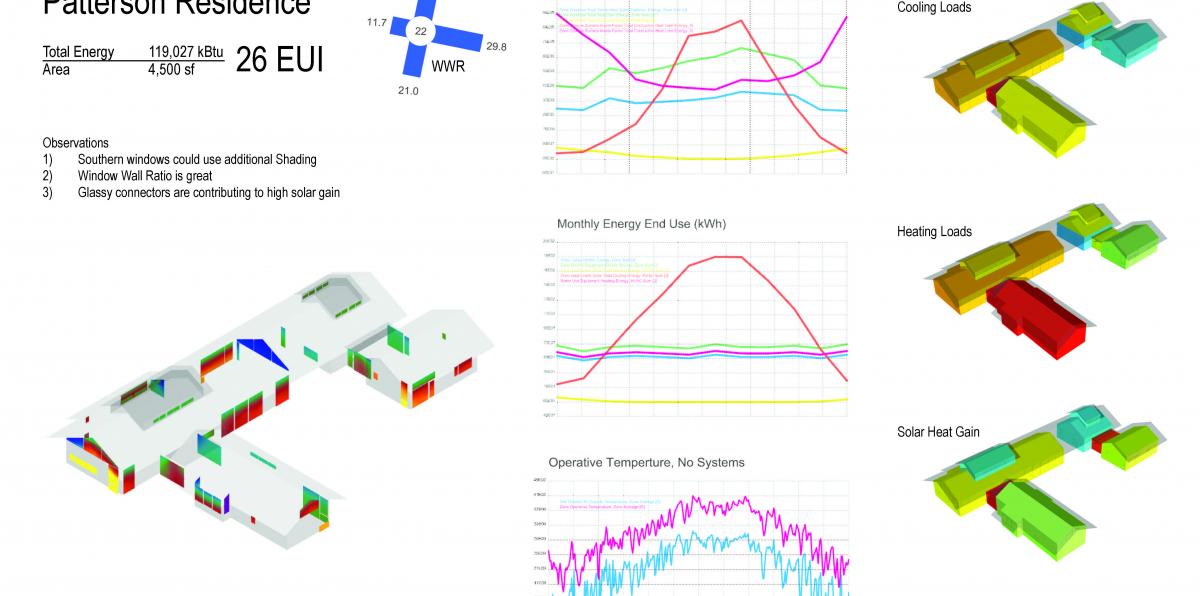THE DOGRUN
a place to share ideas


Instantly Actionable
Posted by coreysquire on 1/30/17 at 4:53 pm
How can a simulation report (energy model report, daylight model report, etc.) be most useful? This is a question we've been focusing on as we revamp and streamline the way we perform in-house simulations. The guiding principle for developing a new report format is " instantly actionable". Project teams should see a report and know which parts of the project are doing well and what improvements can be made.
With this goal in mind, we identified a few characteristics of a new energy model report:
-
Graphic Display - Most energy models are presented in the form of charts and tables. This is great for those (like myself) who love reading tables, but useless to many architects who prefer to communicate graphically. An energy model report should display data graphically and spatially so that clear connections can be made between a potential problem and solution.
-
One Page - Energy models contain a huge amount of information and can generate many different outputs. These can include total building energy, energy end uses, component performance, comfort information, any many other data points. It's important that this information is edited so that only the most relevant and actionable information is displayed. One side of an 11x17 seems to be a good limit.
-
Architecturally Relevant Actions - The same project will always perform better with a more efficient mechanical system and it's great if the client chooses to buy one, but this is not the type of information that would be actionable to the architectural design team. Sustainable design needs to be based in design and the information provided should help to inform a building’s massing, fenestration, shading, envelope, and other architectural features that impact performance. This information will be most interesting, relevant, and actionable to an architect.
-
Quick Turn Around - Energy modeling feedback needs to happen at the speed of design decisions, otherwise relevant information won't be available in time to impact a decision.
-
Relative Values - Much time and focus is spent on energy model accuracy. Though accuracy is obviously important, it needs to be understood that energy modeling is more of an art than a science. Two energy modelers might come up with very different EUIs for the same building based on different assumption and neither answer would be “wrong”. What's important is that an action will move the needle in the same direction at relatively the same magnitude. ( i.e. Better southern shades will reduce summer solar gain by about this percentage.) Because of this, it might be better to remove numbers entirely from an energy model report and instead focus on a relative scale. This is something we are currently experimenting with. As of now, many numbers remain.
-
Interpretive Overlay - Energy model reports often present analysis without interpretation, leading design team to respond with, “great, now what do I do?” The interpretation should clearly state what areas need improvements and supply some suggestion on what to do.
- Subjective Interpretation - There are times when an energy model is the best way to determine how a design is performing. Other times, a project’s performance can be judged just by looking at it. For example, it's easy to determine that an un-shaded, west-facing curtain wall will negatively effect energy performance of a project in Texas. These observations should be clearly documented on an energy model report. Often, a quick subjective analysis is more valuable than anything a simulation engine can produce.
